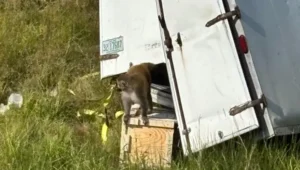5 steps to take before, during, and after acquiring zero-emission vehicles
The new regulations for the implementation of zero-emission vehicles have led fleet owners to feel pressured by the imminent change. The transition and the possibility of abandoning diesel trucks result in stress and confusion for those seeking to comply with the new requirements, as simply purchasing zero-emission vehicles will not guarantee the progress needed to meet current mandates.
Drivers and fleet owners need to stay aware of the realities of this transition. There are steps to take before, during, and after acquiring zero-emission vehicles that will be key to ensuring business success in the evolution of transportation. Scott Davidson, CEO of Revolve, shares the following fundamentals for fleets embarking on this path with Transport Topics.
Fleet priorities and market
Before making a purchase, one of the first steps is to determine the fleet’s priorities. It is crucial to understand the current market and its future direction, identifying the right market according to business priorities and understanding if there are regulations that will negatively affect the cost of the current fleet.
Companies must also consider the operating environment of their fleet. It is essential to conduct a comprehensive evaluation to avoid compromising economic and operational priorities.

Knowledge and integration of technology
Once a fleet owner has identified market dynamics, they must analyze the different technological options. Companies may feel the tension and uncertainty of integrating new technologies into their current operations. However, since electric vehicle (EV) technology is not a one-size-fits-all solution, answers vary based on vehicle usage and business success metrics. Again, it’s a matter of understanding the company’s needs.
Successfully integrating and utilizing electric vehicles requires a systematic approach: a failure in EV fleet technology can impact daily operational capacity.
Compatibility with facilities
Analyzing fleet facilities is crucial to determine if they are prepared for electric vehicles, as not all facilities are suitable. For example, if vehicles are parked far from a cost-effective power source, EVs will present more difficulties. Understanding the readiness of facilities for EVs, from design to incentives and legal obligations, is fundamental for a successful transition.

Driver training
Immediate fleet transition is rarely realistic. Successful companies cannot simply hand over the keys of EVs to their employees; operational teams often lack the resources to determine the optimal percentage of vehicles and routes that can be electrified. Inadequate planning for the driver experience can create long-term barriers.
Education is essential to build confidence and train workers for the transition to electric transportation. Training is crucial for everyone, from drivers to executives.
Securing the future of fleets
According to Davidson, achieving true success with electric vehicles requires a systematic process and program relying on basic capabilities. It is crucial to focus on reducing operational complexities and risks when adopting new technologies for fleets, preparing for the future without losing sight of the core business.

The 2025 Capitol Christmas Tree tour kicks off by the hand of Knight-Swift
The nearly 3,000-mile journey of the U.S. Capitol Christmas Tree began with a special celebration at the Nevada Day Parade in Carson City. The month

A new study links traffic accidents to violations of the ELP regulation
A new study analyzed the relationship between traffic accidents and drivers who violate the English Language Proficiency (ELP) regulation. A new study analyzed the relationship

Clean Truck Deal: Judge Halts California Emissions Agreement with Truck Manufacturers
Clean truck deal and California emissions return to the center of the national debate after a federal court blocks enforcement of the Clean Truck Partnership, pausing requirements tied to zero-emission truck adoption while litigation continues.

Truck Transport of Live Animals for Research: Lessons from the Mississippi Monkey Incident
The transport of live animals for research is under renewed scrutiny after a truck carrying rhesus monkeys overturned in Mississippi, allowing several to escape. This article explains what went wrong, how these transports are supposed to operate, and what lessons the trucking industry can take away.

Halloween activities for truck drivers: take the fun on the road
To celebrate this holiday safely while keeping the fun alive, we’ve put together a list of activities truck drivers can do to embrace the spirit

Secretary Duffy unveils new measures to strengthen trucking safety and compliance
In a press conference, Duffy pledged federal effort to eliminate fraud and improve trucking safety standards. On the morning of October 31, U.S. Secretary of
